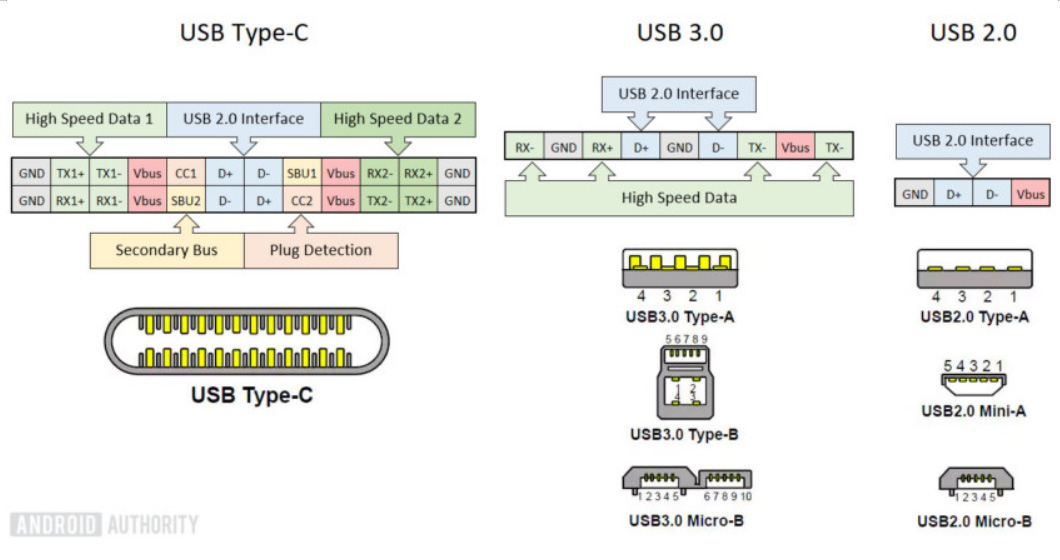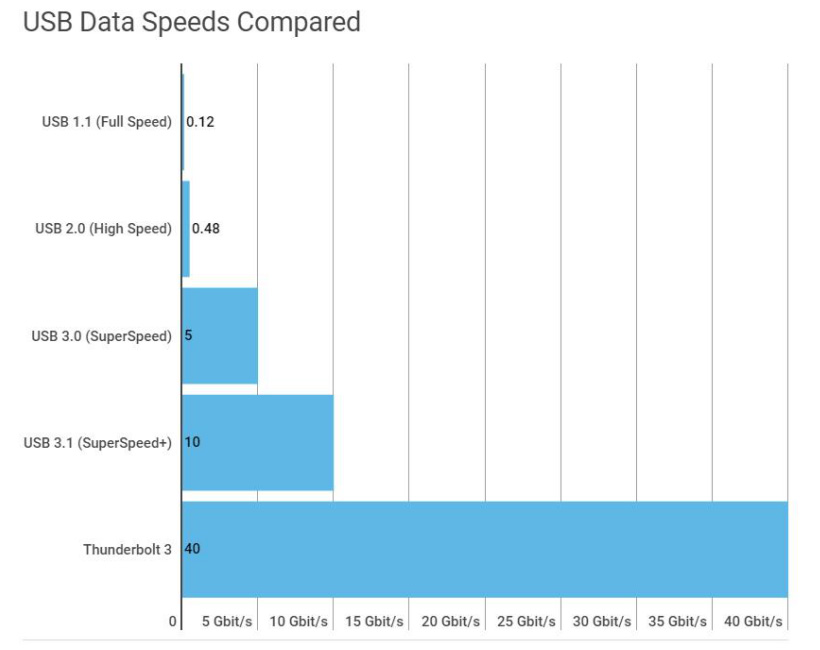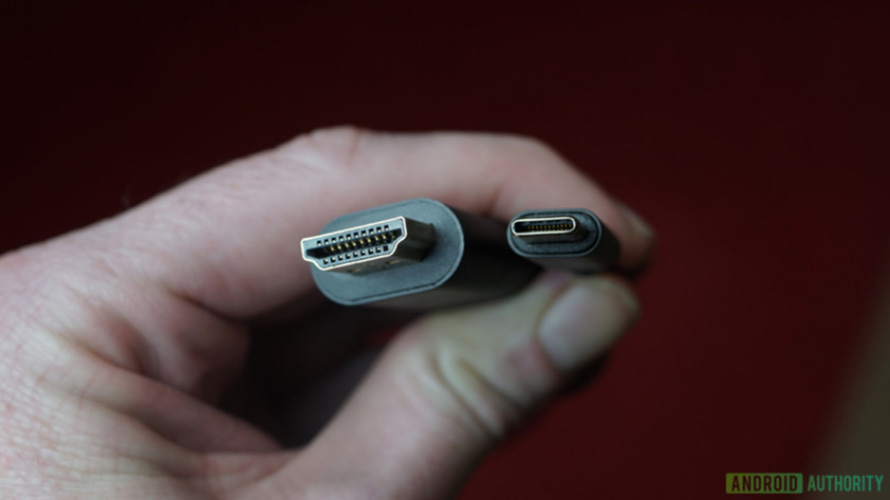What's Type-C
A look at the USB Type-C connector
First, a quick history. The USB connector goes all the way back to 1996 with the USB Type-A connector that you will probably still find on your PC and laptop. The micro-USB port came along with USB 2.0 in 2000 and was the connector port of choice for the vast majority of portable gadgets until USB Type-C came along in 2014.
USB Type-A, B, micro, and mini all share the same basic internal connections (it was just the port shaped that varies), with faster 3.0 cables and ports boasting an extra high-speed data lane. USB Type-C triples the pin count from USB 3.0’s eight up to 24. So as well as being the first reversible design, USB Type-C also greatly expands the number of pins and thus its capabilities too.

USB is over 20 years old, but Type-C is the first reversible cable and major revamp of the standard.
Despite the huge increase in the pin count, USB Type-C is a very small connector that takes up no more room than an old USB micro-B port. This is partly why it’s been adopted so quickly in smartphones.
As you probably spotted on the diagram above, USB Type-C is backward compatible with USB 3.0 and even older 2.0 cables, as it still features the pins used for these traditional data protocols. You’ll find plenty of Type-C to Type-A and micro-B cables for sale online. However, you won’t be able to use some of the advanced features of USB Type-C when using these cables, and that situation has led to some problems when it comes to obtaining quick charge speeds from smartphone chargers.
Data speeds and power
This new pin layout has some implications for both data transfer speeds and power delivery. In terms of speeds, USB Type-C was designed to offer the same speeds as USB 3.1/Gen2, hitting up to 10 Gbit/s data transfers. That’s twice as fast as a standard USB 3.0 port that offers 5 Gbit/s and more than 20x faster than USB 2.0’s 480 Mbit/s data speeds.
The switch to USB Type-C should have simplified this complicated situation, ensuring that newer devices all operate with the fastest possible speeds. However, due to demands for backward compatibility only fully featured USB Type-C ports and cables guarantee USB 3.1 data speeds, and there are a number of devices out there that still only offer USB 2.0 data speeds over this new connector. Also remember that if you’re connecting to backward compatible ports via a converter cable (such as Type-C to Type-A), you will be limited to the slower speed of the older port.
In addition, the Type-C connector is also used by the Thunderbolt 3 standard. Thunderbolt 3 offers even higher peak data transfers at up to 40 Gbit/s, as well as supporting DisplayPort video transfers over the connector.

USB Type-C is no guarantee that you'll see the fastest available data speeds.
As well as delivering data, USB Type-C is designed to power all of our gadgets and not just the portable ones. The connector is rated to deliver and receive up to 100W of power, making it suitable to charge laptops and more. Things do get a little complicated here though, as there are multiple different standards and protocols that can be used to power USB devices.
By default, USB 2.0 ports offer up to 5V, 0.5A of power and 3.0 ports extend this to 5V, 0.9A. USB Type-C pushes the power delivery even further when connecting two of the ports together, with options for 1.5A and 3.0A worth of current. Again, there are no guarantees about the exact level of power you’ll receive from any particularly port just by looking at the connector, but Type-C theoretically offers higher speed charging out-of-the-box than other options.
In addition to the default power options, Type-C devices can be fully compatible with the USB Power Delivery specifications. This can be used to augment the basic charging options with even higher power delivery all the way up to 100W. However, Power Delivery isn’t limited to Type-C devices and still works when connecting up to Type-A or other connectors that also support the optional specification.
The bottom line is that USB Type-C devices should enable faster data transfers and charge times than previous models. However, the exact specifications depend on what the manufacturers decide to implement and aren’t intrinsically linked to the port type.




